Showing 97–108 of 151 results
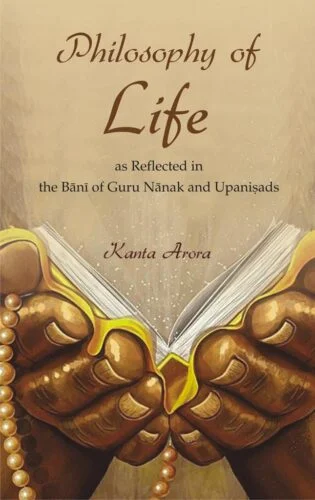
This volume illustrates, compares and discusses as to how Guru Nanak with his transcendental exposition, sharp skill, argumentative capability and common poetic language further enriched, explained, simplified, modernized and expressed various theological and philosophical concepts elucidated in Upanishads for the understanding and adaptation of a common man.
This volume illustrates, compares and discusses as to how Guru Nanak with his transcendental exposition, sharp skill, argumentative capability and common poetic language further enriched, explained, simplified, modernized and expressed various theological and philosophical concepts elucidated in Upanishads for the understanding and adaptation of a common man. Upanishads are breath of eternal and hymns of Guru Nanak are a divine song of life. Guru Nanaks exuberance of love and search for God and godly people was not confined to any religion or religious institution. He revolted against the ritualistic mind of a brahmana. He was essentially a man of God whose love and quest for search for the Ultimate Truth knew no limits. In the pursuit of this search he enjoyed a reach to the state of void meaning a state where there is no distinction between the object and the subject the knower and the known. He was a protagonist of Bhakti tradition and stressed more on bhakti or devotion to God. He taught the Sahaja-Patha or Surata Shabada Yoga that easily takes one straight to the Lord by spontaneous concentration of mind.
Both hymns of Guru Nanak and Upanishads explain that the real aim of human life is to attain liberation from the repeated coming and going in incarnations, which can be attained by adequate karma, knowledge and disciplined meditation.

Using case studies from pilgimages around the world undertaken by the devout, the volume explores the ways many of the pilgrimage traditions have started and evolved. The book deals with pilgrimages not only in India but also in several countries abroad.
Pilgrimage involves movement of people, either as individuals or as members of a group, in search of the sacred. Spontaneous behaviour, miraculous events, and/or ecstatic visions of individual pilgrims have often resulted in complexity in ritual, meaning, and movement. Pilgrimages may start with individual ecstatic visions, unusual strange unworldly experiences, which are the experiences of ordinary people, certainly not of priests or politicians. Often they are uniquely human experiences which embarrass ecclesiastical authorities.
As a pilgrimage tradition evolves, sacred sites may become formalized in organized socio-political systems with economic overtone. Even in these structured situations, individual people may still have powerful individual experiences. Eventually a pilgrimage tradition may be taken over by religious and political authorities, lose spontaneity, and become frozen in time. But even in these situations, in which large numbers of people may gather, there is a tremendous amount of primal energy in which innovations and visions may be evoked.
Using case studies from pilgrimages around the world, the volume explores the ways many of these traditions have started and evolved. A common perspective is that of self-organization of complex structures in space and time.
The variety of pilgrimage described in the book is remarkable. The subcontinent of India is the location of many sites such as the temples to the nine planets in Tamil Nadu, the pilgrimage circuits of Varanasi, early Buddhist pilgrimages in Sanchi and Bodh-Gaya, the great ruined city of Vijayanagara, those associated with the Ramayana, and the death ceremonies at Gaya. Beyond India, the self-organization and stability of pilgrimage systems are analysed for pilgrimages in Nepal (Kathmandu), Japan, Mexico, the Caribbean, Peru, Norway, and the US.

Professor G.P. Singh tries to crystallize the political thought-processes accompanying the evolution of state in the bygone centuries. He dwells on the time-honoured components of the Saptanga theory and their role in supporting the state.
Ancient Indians were a highly organized polity, with a well-established worldview of the Rajya (the State). And also of its seven distinct organs: svamin (the king), amatyas (the ministers), janapada/rashtra (the territory and the people), durgas/pura (the forts/capital), kosha (the treasury), danda/bala (the army), and mitra tatha niti (the allies and inter-state relations). In their togetherness, these components of the state led political ideologues to advance the Theory of Saptanga : the seven limbs each of which admitted varying emphases with ancient scholars, according to the changing political situations or their own predilections. Besides traditional/semi-historical writings, the Saptanga Theory of State finds recurring allusions in Kautilyas Arthashastra which, written sometime about the fourth century BC, remains the oldest surviving treatise of its kind on statecraft. Surprisingly, the Arthashastra itself, claims its author, is a compendium of the writings of as many as eighteen ancient teachers, like Manu, Brihaspati, Ushana, Bharadvaja, Vishalaksha, Prachetas, and Pishuna. With bit-by-bit analysis of an astonishing mass of original, indigenous sources: Vedic, puranic, epical, Buddhist, Jaina, and even non-Indian, Professor G.P. Singh tries to crystallize the political thought processes accompanying the evolution of state through the bygone centuries. Bringing fresh insights into the Saptanga Theory, his study dwells, at length, on all its seven time-honoured components and their variegated roles in lending support to the state. Also underscored here is the relevance of ancient Indian view to modern theories of politics and diplomacy. A thoroughly documented work of equal utility to scholars and students, the monograph is supplemented by a comprehensive index and a glossary of non-English words/ phrases used in the text.
The book investigates some of the most discoursed conducts centring around the characters in the Mahabharata, concluding that these characters reinstate ‘purusartha’ (four basic aspects of human existence) and its relevance in shaping constructive social–political standards and assuring intellectual, emotional and spiritual evolution for individuals from all walks of life. Through rationalized arguments, the book debunks age-old attitudes/perceptions that have kept these characters from being understood from beyond. This way, the book shifts its focus from studying the epic solely for its sacredness to seeking its relevance in the modern way of life and ways in which it can offer guidance through present-day challenges and struggles.
The book investigates some of the most discoursed conducts centring around the characters in the Mahabharata, concluding that these characters reinstate ‘purusartha’ (four basic aspects of human existence) and its relevance in shaping constructive social–political standards and assuring intellectual, emotional and spiritual evolution for individuals from all walks of life. Through rationalized arguments, the book debunks age-old attitudes/perceptions that have kept these characters from being understood from beyond. This way, the book shifts its focus from studying the epic solely for its sacredness to seeking its relevance in the modern way of life and ways in which it can offer guidance through present-day challenges and struggles.
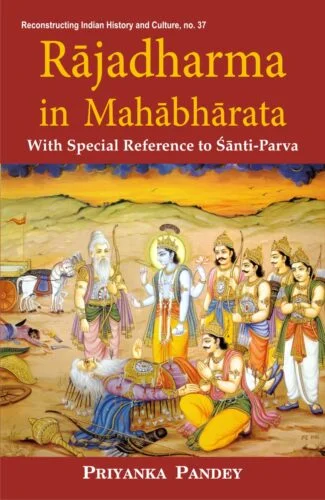
This book deals with all aspects of politics based on Mahabharata and addresses topics such as dandaniti, origin of state, the seven elements of state, functions of state, types of state, kinship, judiciary and administration in detail, among many other issues of political importance.
The idea of politics hardly finds an expression elsewhere as clearly as in Mahabharata. This work thus investigates the political thought explicit in Shanti-Parva and emphasizes that Mahabharata is a text in the study of politics, apart from the perception of it being a great epic and a text of high literary value. Whatever be the notion of politics we contemplate upon, it finds an articulation in Mahabharata. As the Greek tradition of thinking is the base of Western politics, Shanti-Parva of Mahabharata represents the Indian notion of political thinking, though there remain many similarities and dissimilarities between the two systems.
This volume navigates one to how to read Mahabharata as a political text; the idea of political thoughts, the constituting principles of politics and the political institutions in Shanti-Parva; and the relevance of these political thoughts in modern time. Topics such as dandaniti, origin of state, the seven elements of state, functions of state, types of state, kinship, judiciary and administration are discussed in detail, among many other issues of political importance.
The book collects, analyses and examines the internal evidences from Shanti-Parva and also from other parvans of Mahabharata to reach a decisive conclusion, making the work a composite result of textual analysis, related literature and subjective contemplation. It clearly shows that the idea of politics is not separated from the idea of ethics. Rather they are intertwined.
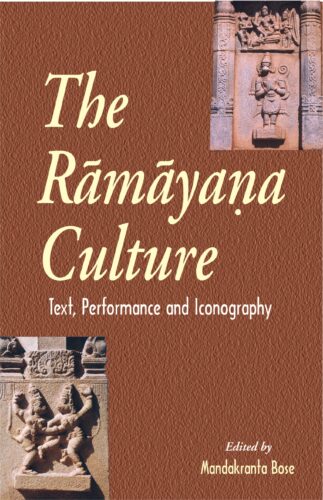
The essays in this volume approach the Ramayana from different perspectives textual criticism, art and architecture, and film to understand its ideological and aesthetic meanings. They address critical issues like the seminal status of Valmiki, gender representation in Ramayana and the importance of the so-called Ramayana derivatives.
These essays, originally presented at an international conference, are in the forefront of the modern response to an ancient work that has gained a new critical and social relevance in contemporary scholarship. Approaching the Ramayana from several angles in an attempt to understand its aesthetic and ideological meaning, they examine the epic through the perspectives of textual criticism, art, architecture and film. Thereby they address critical issues such as the seminal status of Valmiki, the underlying problem of canonicity itself, the importance of other — so-called derivative — Ramayanas, the implications of gender representation, and the cultural manipulation of social ideals relating to the position of women and the idealisation of love that achieves its highest value in marriage. Using the methods of rigorous textual and historical investigation, each essay seeks not only to uncover the layers of meaning in the complex structure of the epic in its varied forms but also to situate it critically in the cultures of South and Southeast Asia.

This book looks at recent developments in the sciences and the humanities taking into account many disciplines. The integral approach suggests radical departures by presenting alternate paradigms to the consumeristic paradigm which governs humankind today.
This book by an anthropologist looks at recent developments in the sciences and the humanities taking into account many disciplines. The integral approach suggests radical departures by presenting alternate paradigms to the consumeristic paradigm which governs humankind today. This reconceptualizing through a rethinking is the only way a shift in lifestyles can be brought about if we wish to avoid the disasters which are upon us in terms of the oftstated ecological, socio-economic, psychological and spiritual crises. The implications of science in the new age are crucial for the growth and relevance of those disciplines which study the human phenomenon. By and large, in these academic disciplines general concepts have neglected the role of Consciousness which is a must in any integral approach.
Each chapter is governed by this overall context, as it is exemplified in the different topics dealt with from the viewpoint of many disciplines. The argument is not a linear sequential one, and in this sense each chapter is self-contained especially because the basic premise is that it is both the observer and the observed which have to be thoroughly understood at the particular and the universal levels. Science itself is moving into metaphysics, converging well into mystical insights and ancient speculative thought. The various themes of the book are: Civilization Studies and Knowledge: A Holistic Approach; Rock Art: A Creative Act; Man in Nature: An Integral Universe; A Question of Consciousness; Science and Consciousness; Violence and Non-Violence: A Binary System; and Integral Listening as Communication.
This anthology, consisting of fourteen essays, deals with a variety of themes that are of central importance for an authentic appreciation of the philosophical core of the Indian culture. The readers will find here illuminating discussions on various issues that bear witness to the critical thinking and deep reflection on the part of the author that have enabled her to carefully expose the subtle internal divergences that nourish the Indian conceptual world.
Based on arduous and painstaking research, these essays focus on a range of topics. There are several essays on multiple aspects of the large themes of time and consciousness, penetrating analysis showing how in the ancient discourse ideas of klesha (affliction), abhyasa (practice) and karuna (compassion) as well as on women and values are dealt with. There are also deliberations on the themes of religious diversity and the need for an encounter of world religions along with the attempt to explore India’s self-image. All these have contemporary relevance, as these essays clearly bring out the distinctive character of a living culture.

The volume speaks about the civilisational dimensions of religion and culture in India, unity and diversity of Indian civilisation, idea of civilisation, ecological crisis in the modern world, relationship between tribal and non-tribal religions, religious philanthropy, Christian influence on Hindu way of life in India, and concept of composite culture of India.
The volume deals with the civilizational dimensions of religion and culture in India. It underlines the point that religion and culture are important elements of all civilizations but it is their interplay that has given a unique feature to Indian civilization.
The essays interrogate the various western sociological discourses on civilization and articulate the alternative conceptualizations available in Indian sociology. They underline the unity and diversity of Indian civilization, present the idea of civilization as conjoined with the idea of civil society and study the ecological crisis in the modern world. They focus on the dialogical relationship between tribal and non-tribal religions, link between religion and environment, religious philanthropy and Christian influence on Hindu way of life in India. They also delve into the concept of composite culture in India, scrutinising aspects of folk religion and cultures to show, for instance, how art forms get accumulated into the idea of culture.
The volume will be of immense interest to a variety of scholars and students associated with the study of Indian religion and culture.
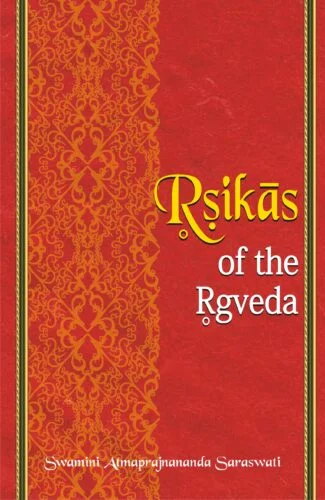
This interesting compendium highlights the importance and stature of women Rishikas in the Vedic literature as epitomes of spiritual attainments, and emphasises that the gender discrimination as seen in the Hindu traditional thought was a later phenomenon. It provides a list of women Rishikas and mantras envisioned by them.
The volume presents a study of the famous women Rishikas mentioned in the Vedic literature.
The book describes the great respect offered to seers in the Vedic literature and the equal importance given to Rishikas when compared to Rishis. Discussing how even women of the Vedic period were epitomes of spiritual attainment, the book admiringly points out that the gender discrimination seen in the Hindu traditional thought was a later phenomenon (such as that women are not adhikaris for the study of the Vedas). It states that there are twenty-seven women mantra-drashtarah in the Rigveda. It provides a list of these women Rishikas and deals with the mantras envisioned by them. The Rishikas are mentioned in the study on the basis of those who praised the deities, those who conversed with the seers and deities, and those who praised the self. The Rishikas mentioned in the Yajurveda, Samaveda, and Atharvaveda are also mentioned. Rishikas whose individual contributions are taken up in detail include Vagambhrni, Surya-Savitri, Shraddha, Daksina, Aditi, Ratri, and Urvashi, among others.
The volume is bound to be a handy reference book for all those interested in Indology, particularly students and scholars of Vedic and gender studies.
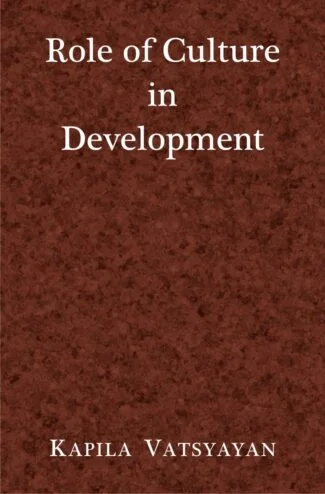
This book covers a spectrum of topics related to culture and development that Dr Kapila Vatsyayan presented on different occasions and platforms. Economic development programmes should be inclusive of cultural and educational programmes, and should have a universal value.
This book covers a spectrum of topics related to culture and development that Dr Kapila Vatsyayan presented on different occasions and platforms. Culture has a wide meaning and varied interpretations. The term development is equally loaded and complex. Both the terms mean different to different persons. Development sans cultural values and ethos makes no sense. Therefore, interlinking of developmental programmes with cultural and educational programmes is imperative.
The volume thus discusses topics such as underlying concepts of the Indian cultural heritages; cultural configuration; profiling of cultural development; cultural tourism, its scope and impacts; new educational policy and the need to incorporate cultural goals in it; cultural osmosis between India and Indonesia; cultural patterns of India; what is culture from the Indian perspective; challenges in institutionalizing culture; cultural relations between India and Indo-China countries; and the contribution of Scheduled Castes and Scheduled Tribes for providing a unique identity to Indian culture.
It also deals with Mahatma Gandhis blueprint on development and the report of World Commission on Culture and Development; Lenins role in making culture available to the Soviet masses and speaks about an ecology of human resources; and contributions of the Orientalists and the present status of Oriental institutes, among some other topics.
| There are no products |